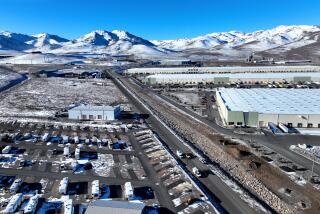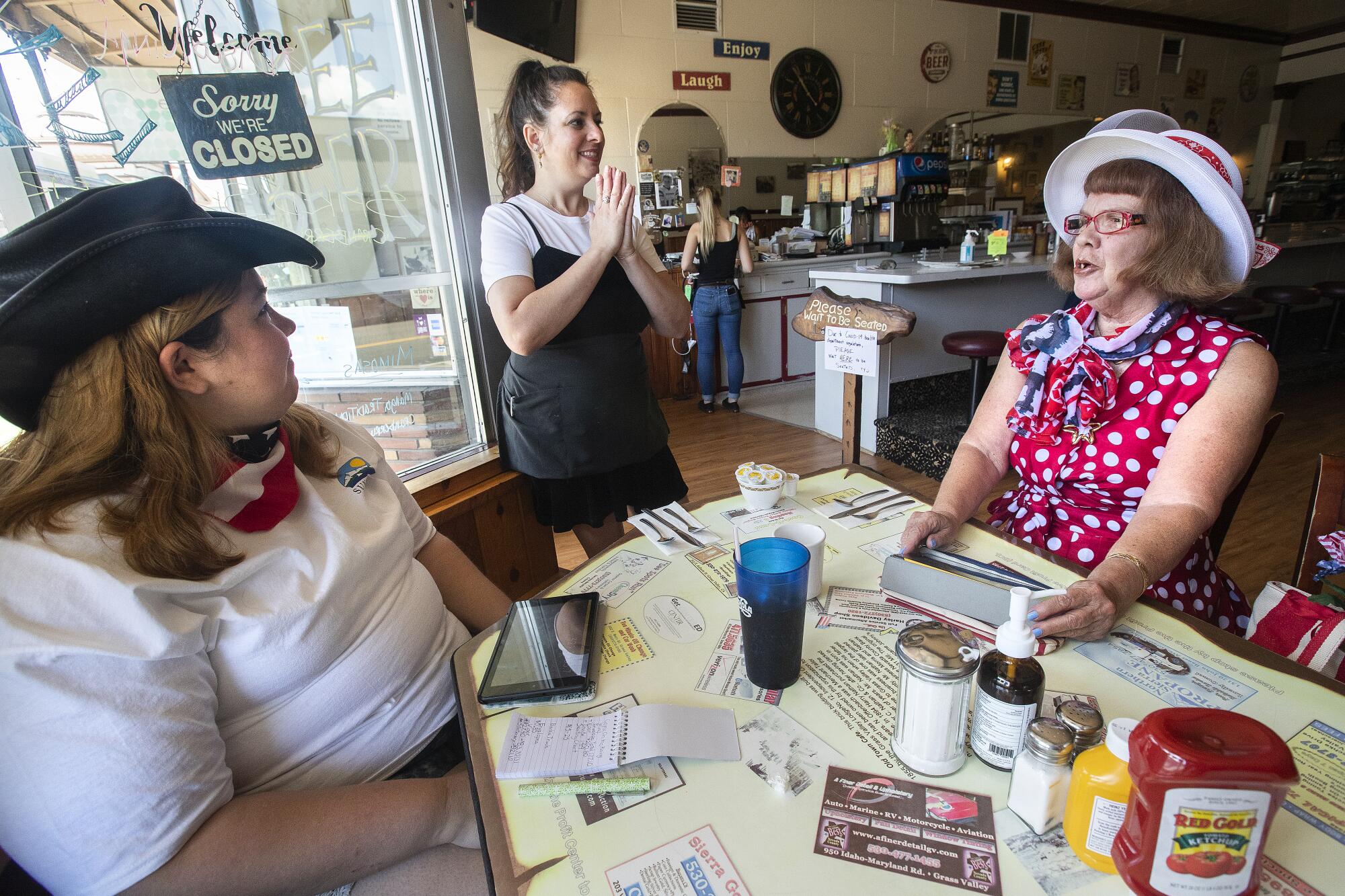
Nevada City, Calif. — In the old mining towns that helped birth this state, the bonanzas could be counted on every summer in recent years — not in the extraction of ore, but in tourism, festivals and destination weddings.
Now businesses are hoping just to survive the summer, even as the novel coronavirus itself has left the region largely unscathed.
Residents in many of the state’s rugged northern counties, from the Del Norte coast to here in the Sierra foothills, are largely watching the pandemic unfold from afar, as if it were one more nightmare in San Francisco and Los Angeles. Some feel stuck in a blind spot of public debate, lost between the terrible reality of the worst of the scourge and the noisy extremists who call it a hoax.
Their remoteness hasn’t spared them from the economic fallout of the shutdown. And the sparsity of COVID-19 cases in Nevada County has only made the restrictive measures hobbling their livelihoods all the more exasperating.
Nevada County has had 41 cases in total, and one death — but no new cases reported since April 28. Moreover, it had just 12 cases on the west side of the county, which includes Nevada City and Grass Valley. The remaining 29 were in the east, around Truckee, separated by 40 miles of wilderness.
But people here are torn — restaurateurs, campground owners, hotel managers, gym operators, tattoo artists and wedding photographers. They know that if California opens up, the virus will come to their communities. If it doesn’t, financial ruin will.
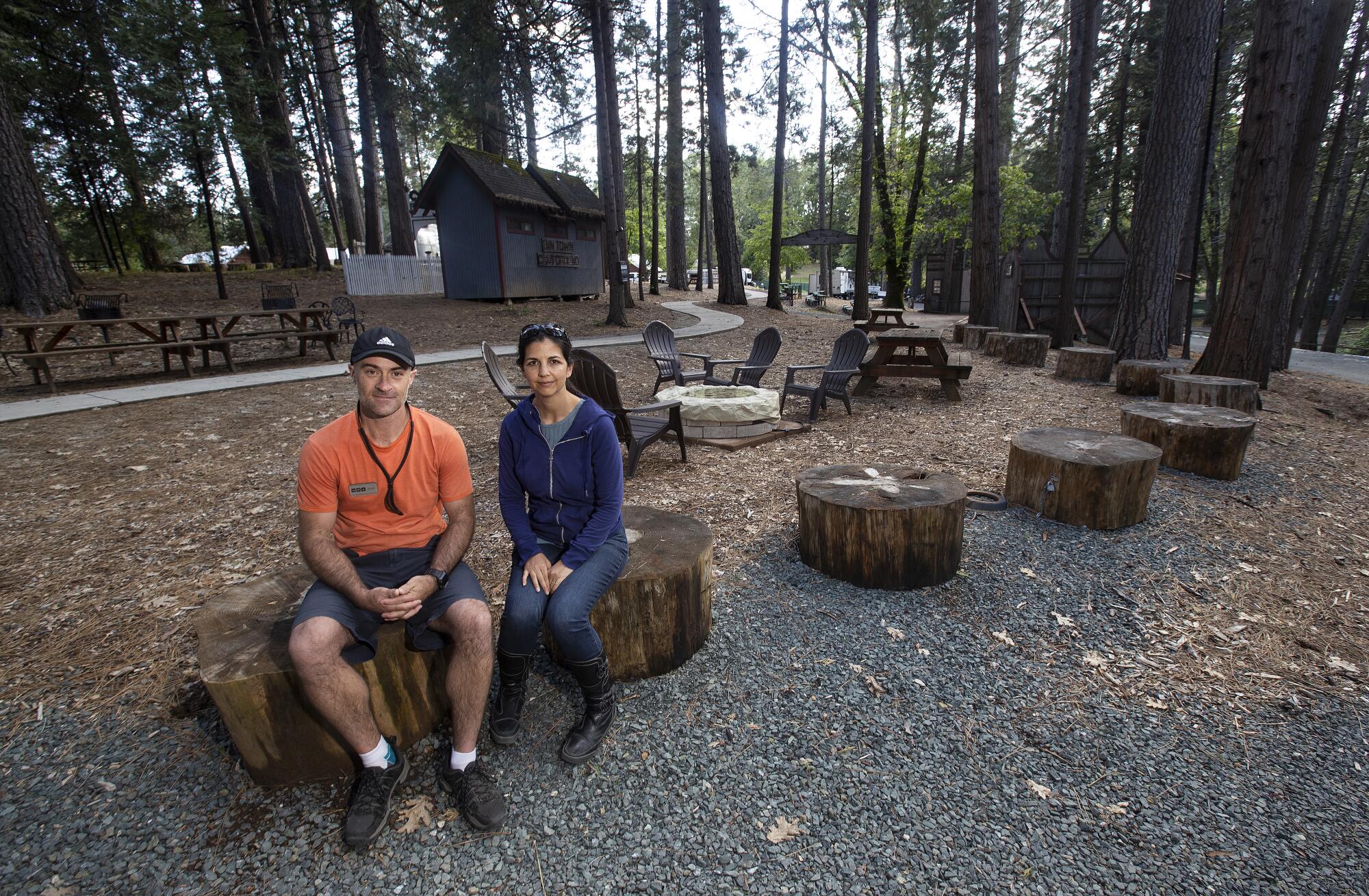
“We make 70% of our revenue in three months,” said Dan Thiem, who owns the Inn Town Campground in Nevada City with his wife, Erin. “And we can’t do that right now.”
Many of their campers come every year and rent their spots months ahead.
The state has given no indication as to when businesses like theirs will be allowed to open. Nor has the county. The couple submitted a proposal to the health department on opening responsibly but hasn’t heard back.
“It’s a colossal failure of leadership on all fronts,” Thiem said. “The plan to deal with the coronavirus is so disjointed, it’s perpetuating it and making it worse for everybody.”
He feels that until counties like Modoc, Yuba and Sutter began to defy state orders in the last few weeks, state leaders were ignoring the more rural areas where work could not simply shift online.
“The asks are different for different people,” Thiem said. “I feel like the policymakers are Bay Area-centric, where they say, ‘Just go work from home.’ You know most of our economy here cannot be done from home. So to say, ‘Go work from home because you’re safer’ is different than to say, ‘You need to shut down and bankrupt your business.’”
He and his wife spend much of their days processing cancellations even for months they might ultimately be open.
“They’re making other plans now for other parts of the country,” Erin Thiem said. “People need something to look forward to.”
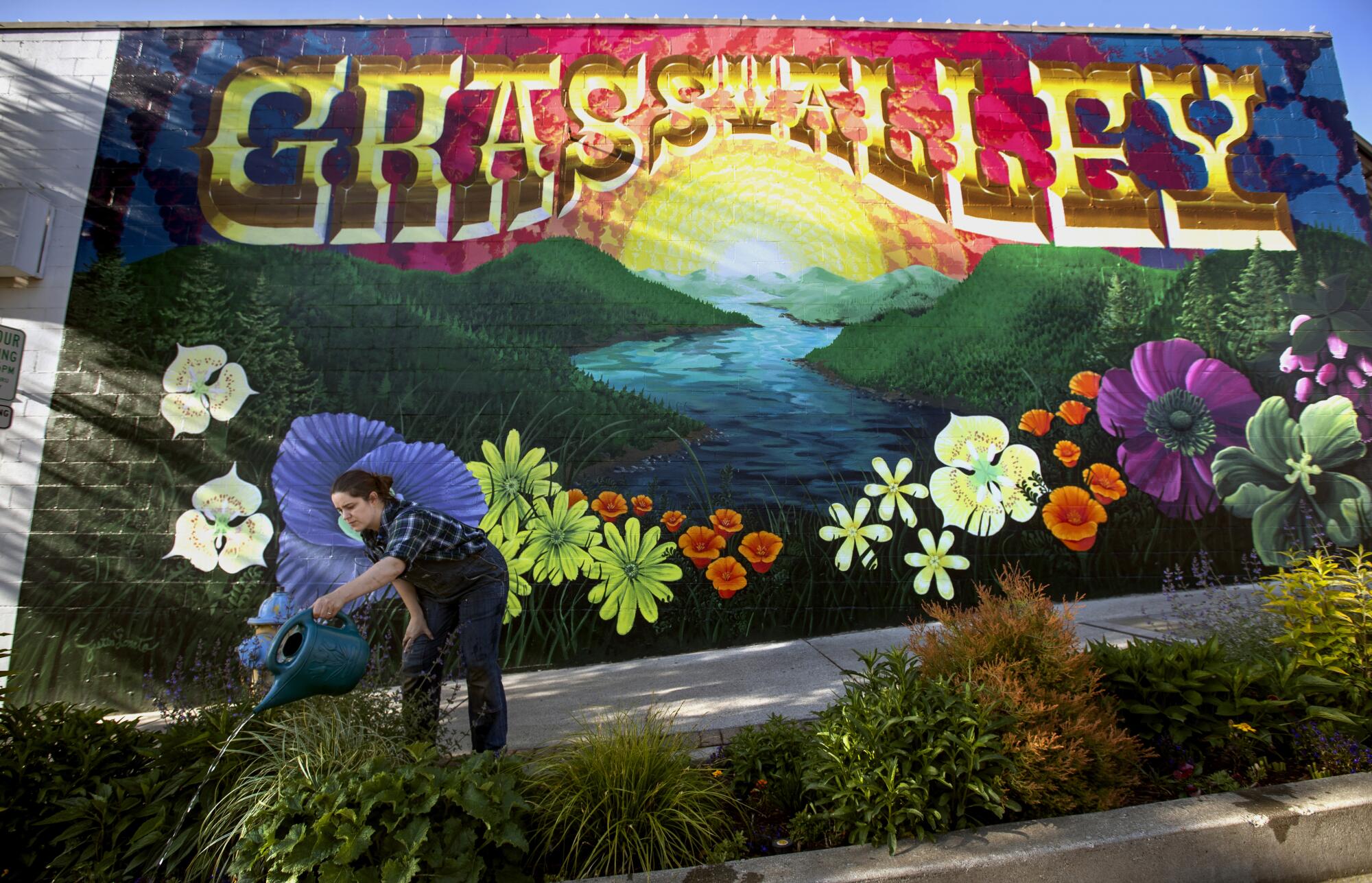
In a corner storefront downtown, Lior Rahmanian finds it hard to see a way out for his One 11 Kitchen & Bar. Like many, he was already on his heels when the coronavirus hit, in debt from a renovation.
He first leased the ground floor of the 150-year-old building in November 2018. It was once a jail, and its brick walls are a foot and a half thick. Three restaurants had operated there over the years, with a tiny kitchen in need of remodeling.
When he moved in, the floor was black with grease, with leaks and rot in the wood. There were 11 unaddressed violations from the health department, he said.
A three-month renovation turned into a seven-month ordeal, and he finally opened last June, deeply in debt.
“We hit the ground running. The first night we opened, I believe it was the First Friday Art Walk. We had a full restaurant within 15 minutes of opening the door.”
But in September and October, high winds prompted Pacific Gas & Electric to shut down the power several times in the region. Rahmanian had to close for eight days, losing more than $2,000 a day, while more than $10,000 worth of food perished.
“Everything is fresh; we don’t have frozen food here,” he said.
Then came the coronavirus. He had to close in-house dining. He laid off his 16 employees and stayed open doing curbside takeout from noon to 8 p.m., working mostly by himself. He wasn’t close to being able to pay his bills — his $4,200 rent, his PG&E bill, back pay to employees, suppliers’ invoices, installments on his renovation loans.
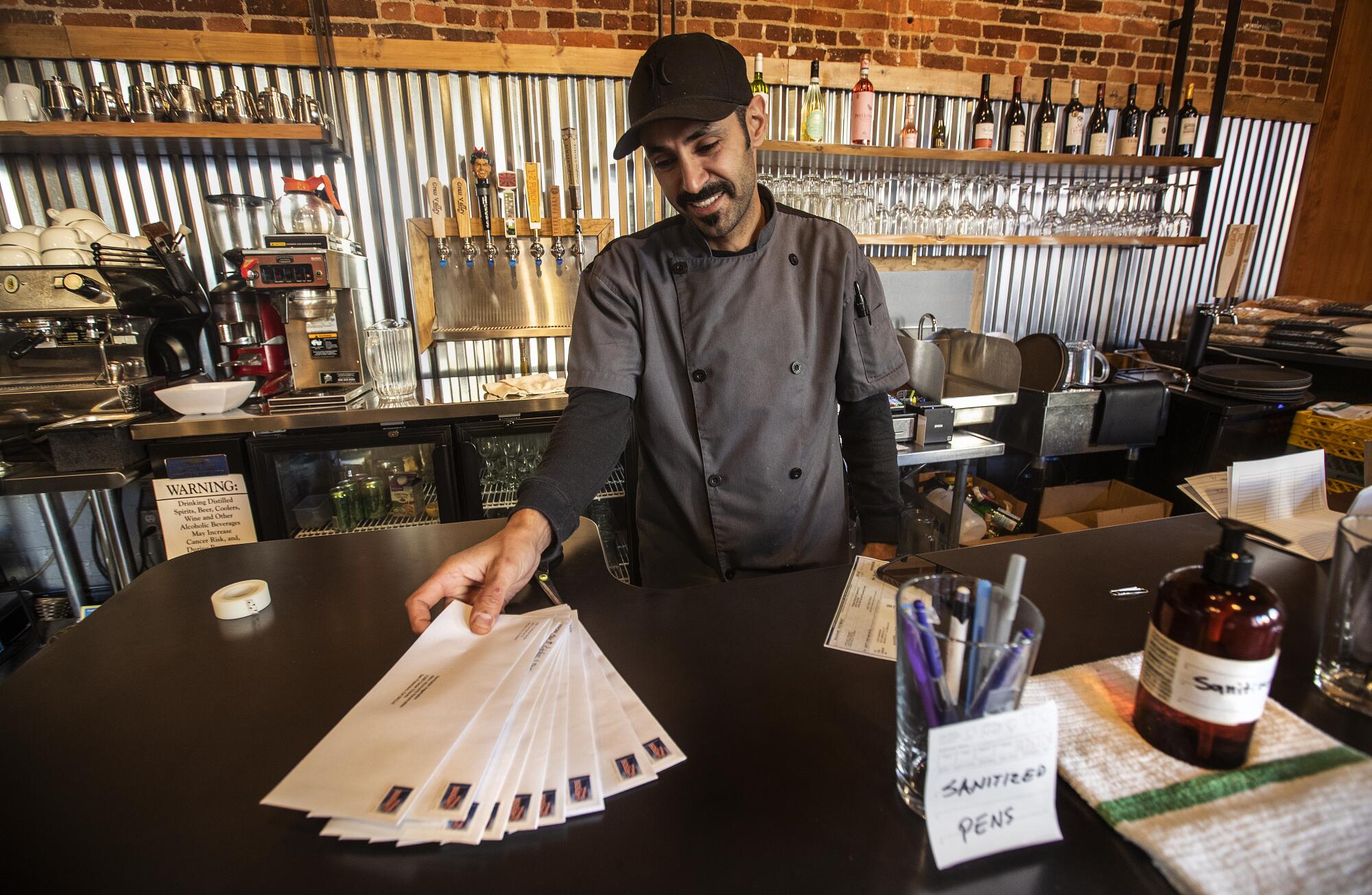
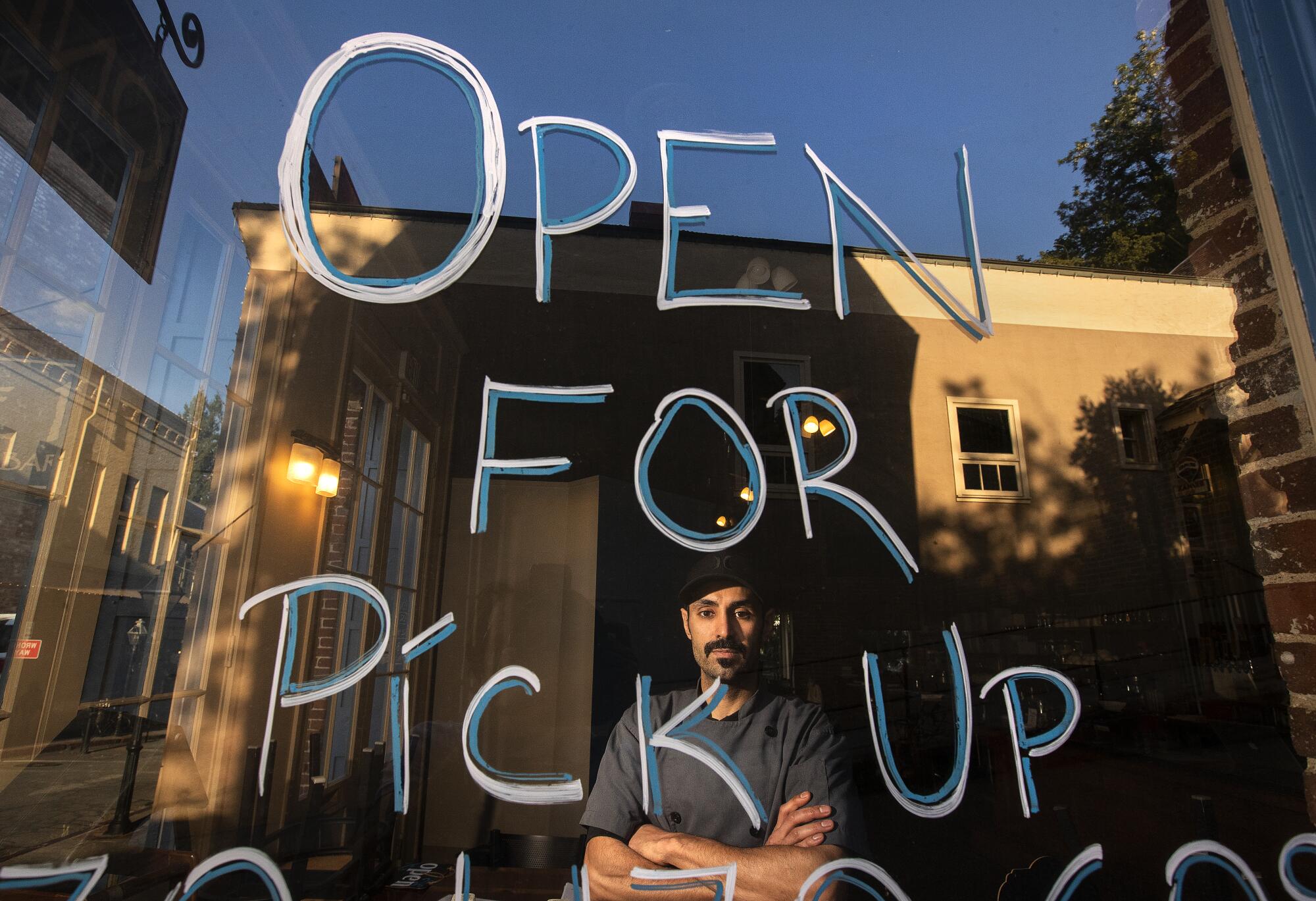
“One of my produce companies, they froze my account because I couldn’t pay my bill. So I’ve been paying them $100 here, $200 here,” he said.
On May 18, the county permitted restaurants to open, under pressure from a group of business owners. It took Rahmanian a week just to find four willing employees at a time when federal benefits are paying them $600 a week on top of state unemployment.
“Most people in the restaurant industry are making more money now sitting at home than working,” he said. “I can’t afford a $4,000-a-month employee.”
A neighboring business owner put their shared predicament this way: “The government bought our employees; now we need to buy them back.”
Rahmanian reopened for diners May 24, having customers order at the counter and seat themselves on the outside patio. He could serve a maximum of about 20 people at a time, compared with nearly 80 before.
He does not blame the government for the distancing or the shutdown. He understands the health emergency and notes that Nevada County has a large population of elderly people. He understands that people are scared.
But he will have to close and file for bankruptcy without help of some sort, whether it be his landlord cutting his rent or the government offering assistance that isn’t just a loan that he’ll have to dig out of later.
“Half rent is the most I can pay until things go back to normal,” he said. “And normal doesn’t really mean the state or the governor or the county telling me I can open full-force; it means when guests feel safe enough to fill up this restaurant. A lot of people a year from now are still going to stay away from large crowds and a packed restaurant.”
Joy Porter, a commercial photographer and chairwoman of a local chamber of commerce, helped organize businesses to lobby the county to open up.
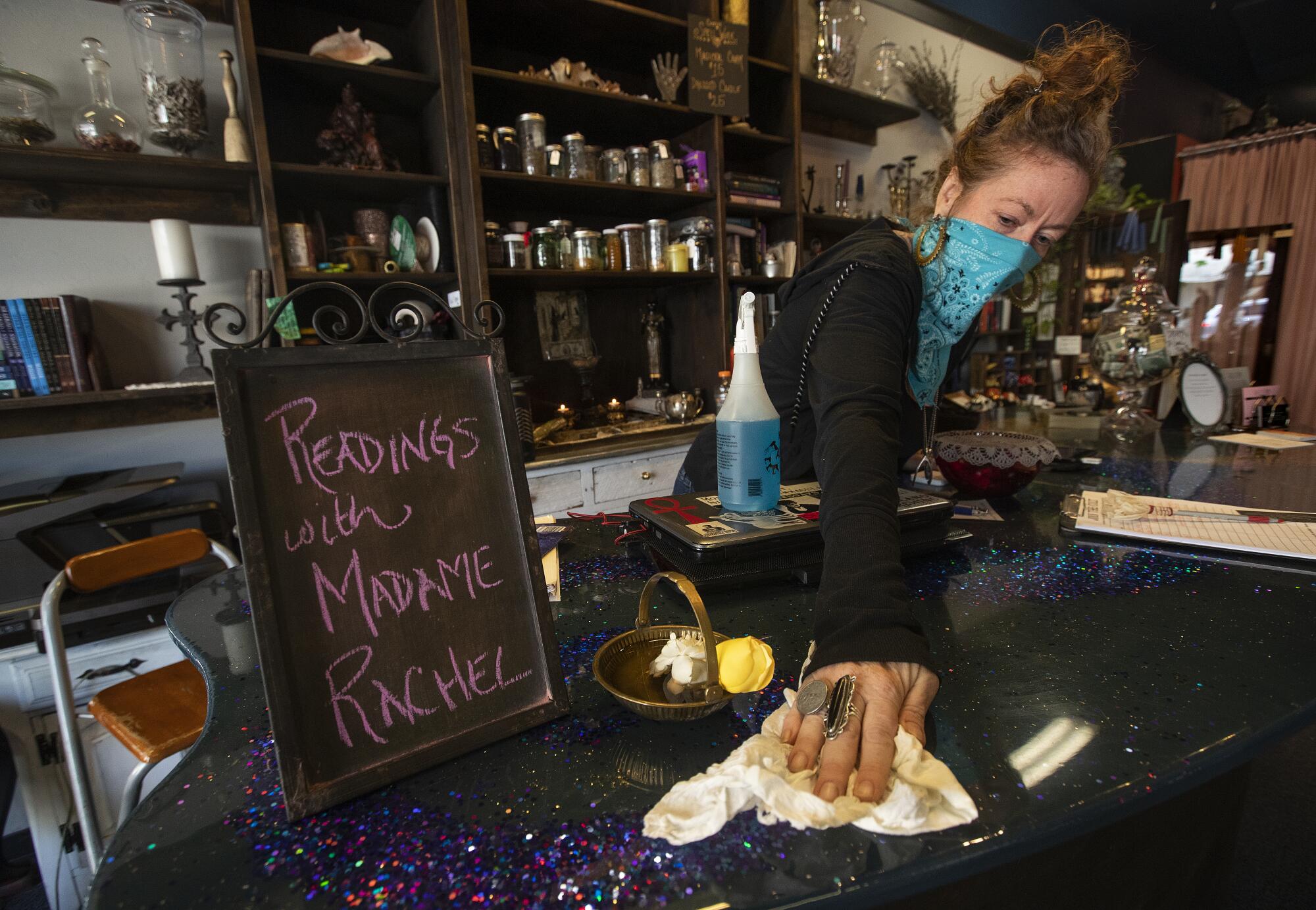
“I was getting dozens of calls from people who wanted to know why we weren’t following Sutter and Yuba counties,” said Porter.
Those neighboring counties to the west — far more conservative and agricultural than Nevada County — announced that they were opening businesses, including restaurants, before the state gave them the go-ahead. They had similar numbers of cumulative COVID-19 cases to Nevada County but hadn’t tapered down to zero.
Porter is still fighting to push the county farther open, against another tide of people clamoring to keep it shut as tightly as possible.
Pamela Magill, 55, ran into trouble when she posted on Facebook that people who did not feel symptoms should not go to a new coronavirus testing center.
“If we get 10 cases, they’ll shut us down again,” she said.
Her business, Gold Country Gymnastics in Grass Valley, had been closed since March, but she had let children on the team practice there in small groups.
“Parents said, ‘Thank you for doing this. Our kids are driving us crazy. They need to get some exercise,’” she said.
She said the most she had at one time was 15 young gymnasts, and maintaining six feet of distancing was easy in the 15,000-square-foot facility, for which she pays $10,000 a month.
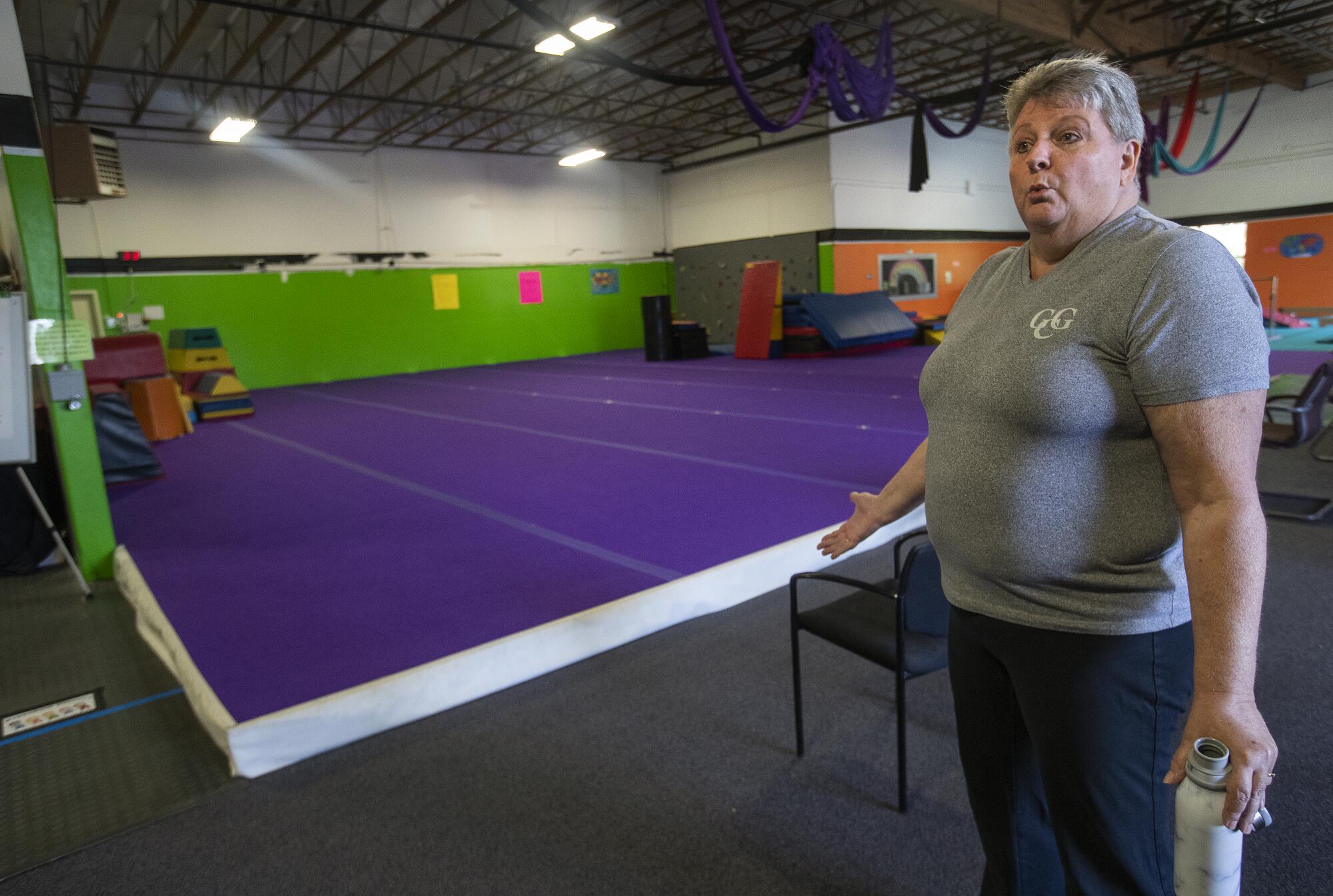
But another contingent of parents was alarmed and notified the health department that Magill had opened against the rules.
The police came two days after her May 9 Facebook post. “Basically, the police officer said, ‘Can you just stay under the radar?’” she said.
She doesn’t want to do that. She said parents and children who feel they can safely work out at the gym have a right to.
“Everybody knows it’s not a hoax. It’s clearly a real virus. There is no doubt that it is scary and it is dangerous and people are dying from it,” she said. But with no new cases in Nevada County since April, “there is absolutely no reason for our county to be locked down.”
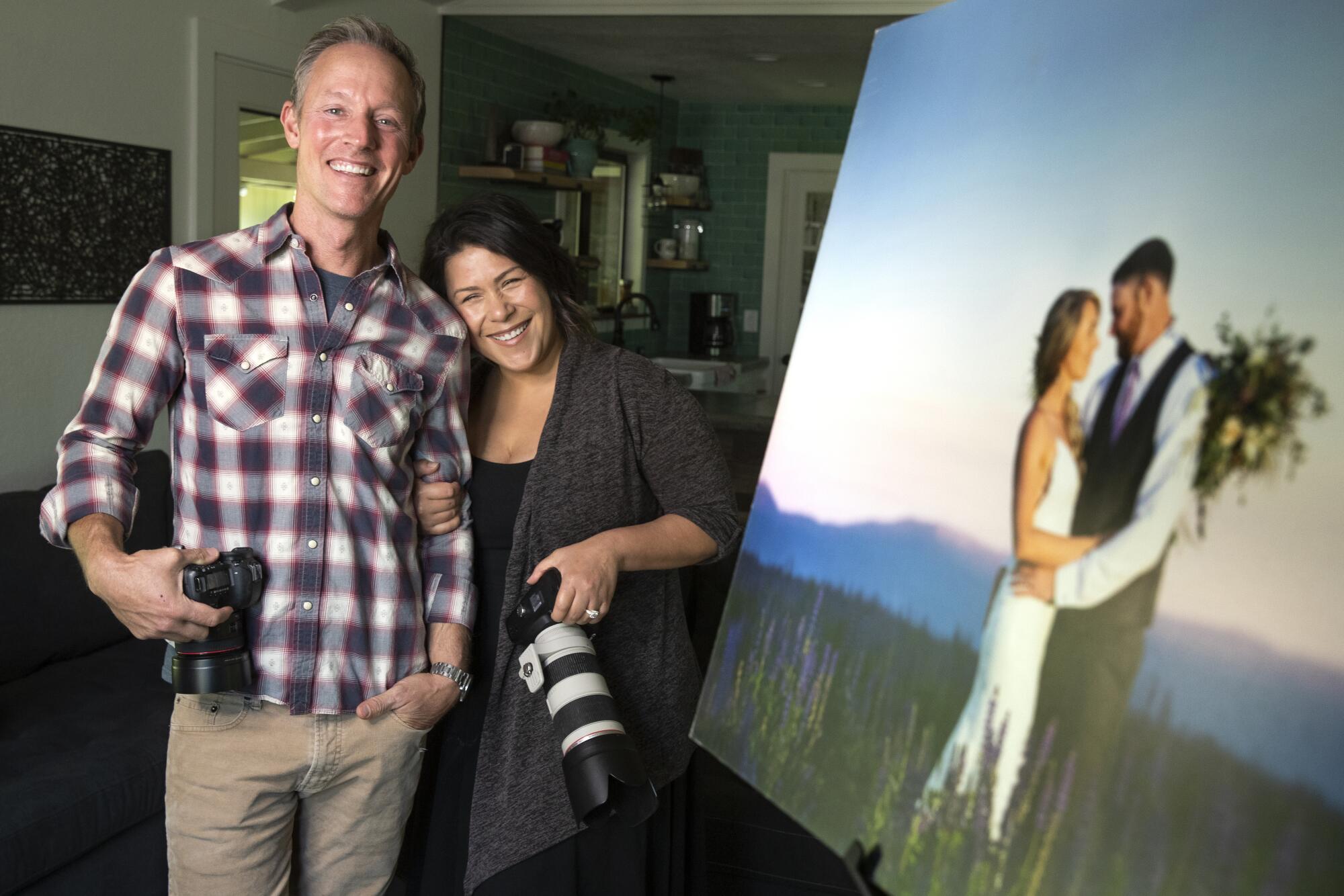
Farther down the foothills in Penn Valley, Melanie and Andrew Mishler, who run a wedding photography business, at first disagreed about the virus.
“I think it’s bull---; he doesn’t,” said Melanie, 44.
Her husband, 45, thinks the shutdown should have been more drastic at the beginning.
“If everyone in the United States and other parts of the world would have taken this seriously in the first two or three weeks and restricted movement, wore masks, did what the professionals and scientists and doctors all said, it wouldn’t have been such a huge disaster,” Andrew said.
Now that it is a “huge disaster,” he agrees with Melanie that they have to learn to survive with the virus. And to survive economically.
Nevada County is a destination wedding location for people from all over the state and the nation.
“We call it the new Napa,” said Melanie. “Everything from barn weddings to vineyards to lakeside — all type of venues here.”
A decade or so ago, people used to bring their vendors from out of the area. “It was still country bumpkin,” she said. “Now we have a really tightknit group of vendors who are really top-notch. Napa standards.”
That all seems to be unraveling before their eyes. They have already lost more than $100,000 from couples rescheduling for next year. They fear this whole year is lost.
“How do you have a wedding with 150 people and social distance?” Melanie asked.
They pinwheel through grief, anxiety, anger, regret.
“One day I’m angry at people for not social distancing,” said Andrew. “The next day, it’s the governor; the next day, it’s China, because I hear they knew about it two months before. Then I’m angry at ourselves.”
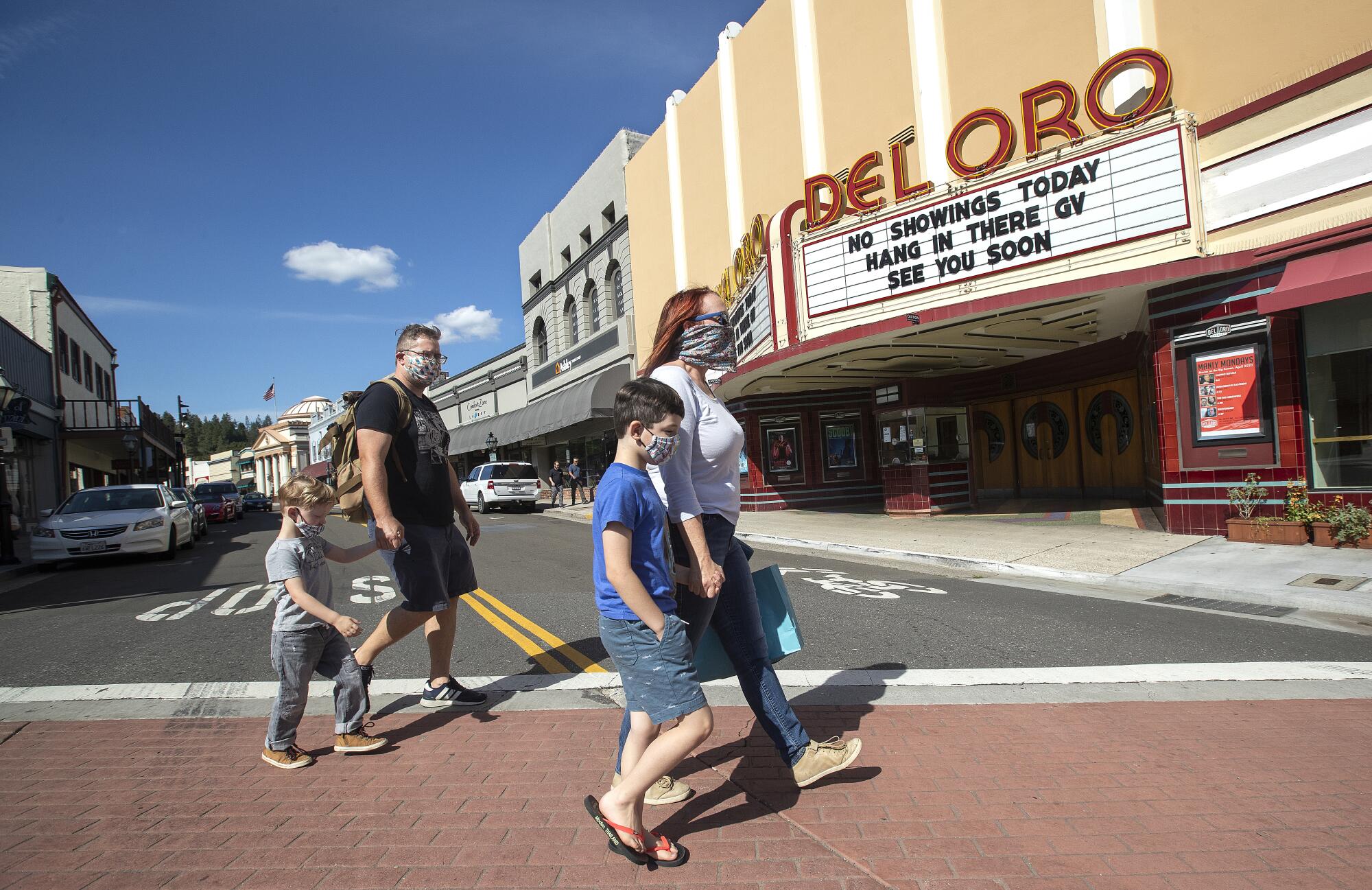
At their campground in Nevada City, the Thiems pace under the ponderosa pines and incense cedars, where their 70 sites are empty.
Usually, Dan said, “these are full every weekend from Memorial Day to Labor Day.”
They pass a fence and sign marking an old cemetery for Chinese workers who helped the town thrive. The campground sits above a vein called the Mohawk, from which hundreds of tons of gold ore were extracted during the 1800s. Those boom times ended with mines closing and stores shuttering.
By 1920, the population was less than half what it was in 1880.
The couple fears the latest era of prosperity is ending too.
“What’s going to be on the other side of this?” asked Dan. “If half of downtown doesn’t survive, what type of community are we going to have?”
More to Read
Sign up for Essential California
The most important California stories and recommendations in your inbox every morning.
You may occasionally receive promotional content from the Los Angeles Times.

